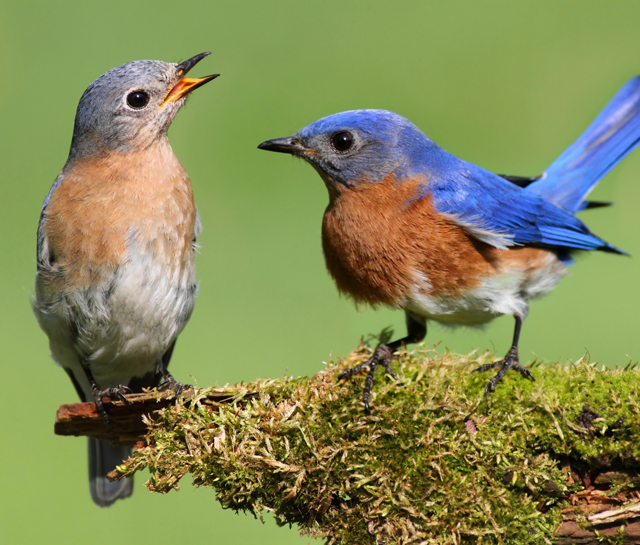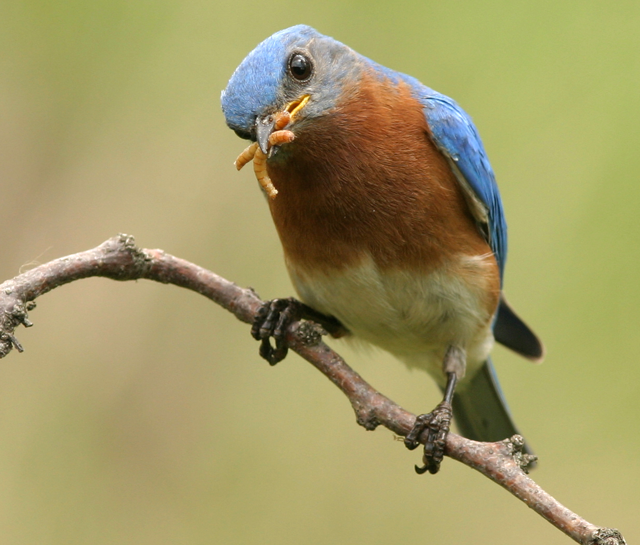Backyard birds
Attracting Bluebirds
If you live near a field, or any open area including yards, roadsides and even cemeteries, which contains a mix of open spaces and trees, you have a very good chance of attracting a nesting pair to your property.
Eastern Bluebirds originally nested in tree cavities, but suburban growth has dictated the removal of “snags” or dead-limb trees, reducing native nesting habitat.
All Seasons Wild Bird Store sells several nest box designs recommended by the The Bluebird Recovery Project, a statewide organization dedicated to the bluebird population.

Mounting Your House
No perch is necessary. Birds that use birdhouses don’t need them. The perches can be used by predators to hold on to the house while they grope for eggs or young inside. For safety of your birds, affix a metal portal plate to the entrance to prevent house sparrows, woodpeckers and squirrels from widening the entrance hole.
Mount the house so the entrance hole faces south/southeast, out of prevailing winds. Place the house so that it gets the morning sun for warmth.
When mounting on a pole or post use a baffle for further protection from predators.
Placing Your House
Bluebirds are territorial and generally will not nest closer than 100 yards to other bluebirds. For the best results, mount pairs of houses 10 to 25 feet apart. Sometimes tree swallows will fight bluebirds so vigorously for a house that you might need to mount the houses back-to-back on the same pole. Keep the nest box pairs at least 100 yards apart to encourage more bluebirds to nest.
A Bluebird’s Diet
Eastern Bluebirds are primarily insectivores, ingesting spiders, live or dried mealworms, millipedes, caterpillars and other delectable lawn bugs. It is vital to the ongoing health of the bluebird population to provide a pesticide- or chemical-free yard.
During the early spring and late fall, when insects are less plentiful, the bluebirds will dine on sumac seeds and honeysuckle, as well as several types of berries and grapes. They also have been attracted to feeders using nut meats, suet and raisins.
Many people have success attracting bluebirds to specific insectivore feeders. All Seasons Wild Bird Store offers several types of feeders, and in our stores we sell the live and dried mealworms to use in them.
Want to learn more?
For more information on the Eastern Bluebird, visit the North American Bluebird Society.


